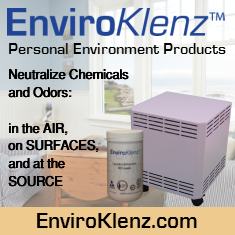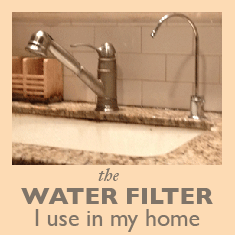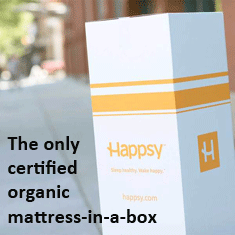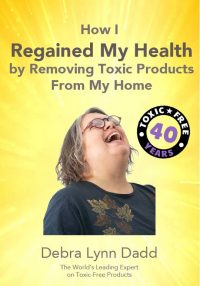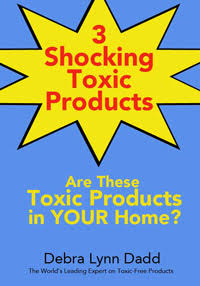Air | Humidity Control
Waffle Maker
Question from bev Rockey
What kind of waffle maker would you recomend? So many are teflon coated.
Debra’s Answer
Well, personally I don’t eat waffles (though I love them!) because I don’t eat grains. I haven’t seen a waffle maker in a long time that didn’t have a Teflon finish.
Readers? Do you know of any?
I’ve questioned for myself the necessity of eating foods that require special equipment just to make that one thing. How many resources would we save if nobody ate waffles? We could make pancakes in the same skillet used to make other foods…
Non-Toxic Cutting Board Recommendations?
Question from JT
hello,
i was looking for a new cutting board. up to now, i’ve been using john boos’ butcher block. but it cracked, and i’m in the market for a new one. however, prior to repurchasing a boos block, i was concerned re: the potential toxic glues and laminates used. should this be an issue to consider? in addition, they have their ‘mystery oil’ used for upkeep of the board vs. regular food grade mineral oil. i’m not sure if that’s okay, or if there’s as natural oil that you might recommend?
i’ve also looked into bamboo, and saw ‘totally bamboo’s’ site stating that they do not use toxic glues with their products. i’ve not had any experience with bamboo, and was curious if either you or your readers might have some feedback regarding this vs. maple butcher block.
the plastic synthetic boards, i assume are toxic.
what cutting boards (and oils) have you found to be the best performing and least toxic?
thank you kindly.
Debra’s Answer
I personally use maple, though I would consider a bamboo cutting board if I needed to purchase a new one. I’ve had mine for years, and actually have never put anything on them (see Q&A Wood Conditioner for Cutting Boards and Bowls for a lengthy discussion on this). They are still in excellent condition and I use them daily.
I’ve never found a cutting board to have toxic adhesives. They are required to be food safe.
The common 1/2′ thick plastic boards are made from High Density Polyethylene (HDPE). According to the International Plastics Task Force, mice fed HDPE powder as part of their diet “developed no changes in their general condition” in the short or long term.
Here are the types of cutting boards currently available:
Plastic — These come in hard and flexible plastic, and thick or thin. The harder the plastic, the less it offgasses. Sharp knives easily cut soft plastic, and can cut right through a soft thin plastic board. Hard plastic boards are very durable and easy to clean.
Tempered Glass — These are completely nontoxic, very durable, resistant to heat, and are the most sanitary and easy to clean. The disadvantage is they dull knife edges and make noise when you are chopping.
Bisphenol A Exposure from Plastic Mouth Guards
Question from Mira
I am pregnant and have been reading a lot about the danger of bisphenol A exposure to developing fetuses (e.g. recent San Fran attempt to ban this chemical from baby products). This chemical is found in polycarbonate plastic among other places. I am concerned because I grind my teeth and wear a polycarbonate mouth guard nightly. I worry that BPA may be leaching from my mouth guard and harming my unborn child. I have spoken with numerous dentists but none were that knowledgeable on the subject. I contacted dental labs but have not been able to find a “toxin-free” alternative material from which the guard can be made. I also have not been able to find any research about the risks of wearing mouth guards during pregnancy.
Unfortunately I need to wear my mouth guard or risk breaking my teeth. Do you have any insight or advice for me?I am pregnant and have been reading a lot about the danger of bisphenol A exposure to developing fetuses (e.g. recent San Fran attempt to ban this chemical from baby products). This chemical is found in polycarbonate plastic among other places. I am concerned because I grind my teeth and wear a polycarbonate mouth guard nightly. I worry that BPA may be leaching from my mouth guard and harming my unborn child. I have spoken with numerous dentists but none were that knowledgeable on the subject. I contacted dental labs but have not been able to find a “toxin-free” alternative material from which the guard can be made. I also have not been able to find any research about the risks of wearing mouth guards during pregnancy.
Unfortunately I need to wear my mouth guard or risk breaking my teeth. Do you have any insight or advice for me?
Debra’s Answer
It can be confusing to make decisions about exposures to toxic chemicals of all kinds because in a addition to how toxic something inherently might be, “the dose makes the poison,” meaning, how much you are exposed to and the frequency of exposure determines the toxicity in your body more than the inherent toxicity of the substance itself. Salt, for example, is essential to life, but can be deadly if too much is eaten at one sitting.
Bisphenol A is known to have negative health effects (read all about them at Our Stolen Future: Bisphenol A). According to Our Stolen Future, “Research over the past decade has established that BPA alters cellular function and disrupts developmental processes at exquisitely low levels, far beneath EPA’s current ‘reference dose’ for the compound, and at levels to which many people are exposed daily, in the US and other countries.”
Bisphenol A has been most highly publicized for it’s presence in clear and colored transparent polycarbonate plastic, because of the popularity of using this plastic for water bottles. Bisphenol A leaches from polycarbonate as the plastic ages. The rate of degradation depends on how the plastic is used. If exposed to acid or alkaline solutions, or heated, the rate of leaching increases. When you wash water bottles in a dishawasher and reuse them, for example, that process accelerates the leaching. Therefore, a new plastic water bottle would leach less bisphenol A into the water than one that has been reused many times.
It’s likely, though, that you are being exposed to bisphenol A from many other sources. It is also used to make the resin that lines metal food cans to prevent the metal from contact with food. Some estimates approximate that 80% of metal food cans are lined with bisphenol A resin, and it’s not on the label. Another reason to eat fresh food.
Bisphenol A is also used in the manufacture of epoxy resins and other plastics, including polysulfone, alkylphenolic, polyalylate, polyester-styrene, and some polyester resins. It is also used as a fungicide, antioxidant, and a flame retardant, in the making of rubber chemical, and to stabilize polyvinyl chloride.
Engineered wood and veneer
Question from Maggie
Hi! I am considering buying a media stand from Crate&Barrel and they say it is made of solid wood, engineered wood and veneer. Can you please tell me what engineered wood is and what chemicals might be found in it and in the veneer? Thank you!
Debra’s Answer
First, “solid wood” is a piece of wood that has been cut all in one piece from a branch or trunk of a tree.
“Engineered wood” is a piece of wood that has been made from smaller pieces of wood glued together with adhesives. The pieces of wood can be wood strands, particles, fibers, or veneers or even whole small trees. Particleboard and plywood are both engineered woods.
Engineered wood products do have some environmental advantages. They are made from the same hardwoods and softwoods used to manufacture lumber, so sawmill scraps, wood with defects, and other wood waste can be used. (Engineered cellulosic products are also now made from other “waste” materials such as rye straw, wheat straw, hemp stalks, or sugar cane residue–these contain similar cellulosic material, but from vegetable fibers rather than wood.)
Though these products conserve resources by use the wood efficiently, they are more expensive to produce than solid lumber in terms of time, money, and energy.
There is also a concern about the toxicity of the adhesives used, which can release formaldehyde. The types of adhesives used are:
“Veneer” is a paper-thin layer of wood that is cut from a single log, by “peeling” the log from the outside in. It’s like if you took a carrot and peeled it with a vegetable peeler by going around and around the carrot, rather than lengthwise. This good-looking piece is glued on to engineered wood to make it look nice on the outside. For example, go to a home improvement store and ask for “furniture grade plywood”. You’ll see the layers of engineered wood, but on the outside, there is a very pretty layer that has a pretty wood grain. That’s the veneer.
Somersweet by Suzanne Somers
Question from KJR
I love all your information about natural sweeteners. I wonder if you have come across Suzanne Somers’ Somersweet. It is made from predominantly oligofructose. Any thoughts?
Debra’s Answer
Oligofructose (also called Fructooligosaccharide, FOS) is a subgroup of inulin, a blend of fructose polymers found widely distributed in nature.
Inulin is not digested in the small intestine, so not metabolized to produce energy, thus they have a reduced caloric value. They do not lead to a rise in serum glucose or stimulate insulin secretion.
FOS is primarily sold as a proniotic enhancer, as it is an ideal substrate for beneficial intestinal bacteria and can stimulate its activity by several hundred percent.
It is derived from a plant source (usually chicory or a sucrose such as cane or beet sugar).
A couple of years ago I looked into using FOS as a a sweetener, so I bought a bottle of “100% pure FOS”. I gave up on it because it really is not very sweet and it would be expensive to use as a sweetener ($12 for 1/2 cup). So I strongly suspect that there is something else in SomerSweet. I wasn’t able to get the ingredients off her website and there was no phone number. So if you have the rest of the list of ingredients, please send them to me. I need to look at those too.
Beet Sugar
Question from KJR
Recently I was at a health food shop that sold various freshly-made muffins and cookies. Many of them were made with beet sugar. I assumed that these must be a natural sweetener that I missed among the many I use. But I don’t see it here or anywhere else as being anything except an alternative to refined white sugar. Why is the health food store using it?
Thanks for your time!
Debra’s Answer
I don’t know why they are using beet sugar. Here’s what I can tell you about it.
I haven’t included beet sugar on my list of natural sweeteners because I haven’t seen unrefined beet sugar commercially available to home cooks. I did once find some red beet crystals that are simply dehydrated juice of the red beet. Though it was very sweet, it also tasted like dried beets, and it was $25 for one cup, so I didn’t think that was practical.
Beet sugar is made from sugar beets. Sugar beets have been cultivated for thousands of years in one form or another as a vegetable. It was also thought to be a cure for nose and troat ailments and for constipation. But it was not used for sugar, as it’s concentration of sugar was not very high and it was difficult to extract.
Then in 1747, a German chemist, Andreus Marggraf, extacted the sugar from sugar beets using brandy and discovered the sugar in the beet was the same as the sugar in sugar cane. The first factory to make sugar from sugar beets was built in 1799 but it failed because the sugar content was too low.
During the Napolenonic Wars of the early 1800s, an English blockade prevented import of sugar cane to France. Napoleon tuned to sugar beets to satisfy the sweet tooth of his countrymen. He allocated land and money for the farming of sugar beets and the building of sugar mills and refineries. French agriculturists managed to raised the sugar from 7.5% to 17%. By 1814, small factories were operating in France, Belgian Germany, and Austria.
Beet sugar is considered to be of inferior quality to cane sugar. This is why “pure cane sugar” is used in advertising. Where cane sugar is available, it is preferred over beet.
Removing Fragrance From Houses
Question from Aimee
I am enjoying your newsletter and your website with all of the valuable information. I really appreciate it.
I have a question regarding the synthetic fragrances that are in laundry detergents (as in Tide, etc) and in fabric softener sheets as well as in plugins like Glade and Wick and those awful ‘candles’ that turn liquid when burning….we are househunting and the last two houses that we really love are full of the smell from the above products. Is it possible to remove that smell? Both houses are vacant and both have carpeting in them. Do synthetic fragrances only get into fabrics such as carpet, or, do they also get into wood (as in wood cabinets and door frames, etc) and even into paint?
Thank you,
Aimee
Debra’s Answer
Lets see how others have handled this problem. Readers?
Removing Hard Water Stains
Question from sheila
I have very hard water that stains everything. Presently we use different toxic chemicals to clean the rust stains from our bathroom toilets and showers. Do you have any recommendations for cleaning the orange hard water stains from rust and maganese in our water.
Debra’s Answer
There used to be a page compiled by somebody named Loretta that has lots of ways to use baking soda, borax, soap, lemon juice, vinegar, and other natural substances to clean around the home. The website hosting that page no longer exists.
She suggests “Apply full-strength vinegar or lemon juice and let stand until spot disappears, rinse. Repeat if necessary.”
Readers, your suggestions?
Removing perfume from used clothing purchases
Question from Mary
I like to shop in used clothing stores. However, many of the clothes have left-over scents in the fabric from perfume, cologne, and deoderant. I recently discovered that if I soaked clothes in 20% vinegar, 80% water for at least three days, this removed the perfume in most cases. I wash the item in cold water after soaking and usually hang it to dry.
How do I find the major toxins in my home?
Question from JP
I bought my conventional home 3+ years ago and I am slowly greening it as I can afford to replace things. My dad recently mentioned that when he house sits for me or visits, after a few days he notices that he starts to not feel well. He could not discribe any symptoms other than not feeling well. My dad normally has robust health, so this really got my attention. For me, I feel alright but certainly not great.
How do I begin to find the major sources of toxins in my home? My home is about 15 years old and uses propane for the furnace and hot water. I plan to get rid of the propane within the next year or so. Propane is a great concern for me, though I can not tell you why other than something about it doesn’t feel right. I keep my furnace maintained and I have a propane detector and a CO2 detector. I use natural cleaning products, eat orgainc whenever possible.
So where do I start?r
Thank you,
Jan
Debra’s Answer
Read my book Home Safe Home, which outlines all the major (and many minor) exposures to toxic chemicals in the home and tells how to eliminate them.
Also, the Toxics page of Debra’s Bookstore has many books by other authors that identify toxic chemicals and their health effects.
female hygiene after baby delivery
Question from KD
Hi Debra, I am about to deliver again… my second baby. Last time, I had some post-partum issues and this time I’d like to avoid the regular over the counter products like pre-moistened pads and so on as much as possible. They are medicated and full of parabens and stuff. Would you be able to point me in the right direction in terms of what I can get to deal with these post-partum issues?
Thank you very much in advance,
Debra’s Answer
I don’t have personal experience giving birth, but most of the websites on the Babies & Kids page of Debra’s List are run by mothers who have taken the natural path.
Try contacting them and asking your questions. They may have just the products you need for sale on their website.
Natural moms, your recommendations?
“Rice” Paper for Shoji Screens?
Question from Rima
My husband recently made shoji screens for our dining room. What we used for the “rice paper” was a synthetic product called “syn skin” that a local company that makes high-end shojis uses for all its screens. But when we received the product from TAP Plastics, it reeked of chemicals so badly, we had to leave it outside for at least a week before we were even willing to handle it. For future shoji projects, can you recommend a nontoxic rice paper, and where to get it? Thanks.
Debra’s Answer
www.rice-paper.com has natural rice paper from China as well as a lot of interesting information on the history and production of rice paper, and instructions for making your own (if you are so inclined). Acorn Planet has a lot more information about rice paper and sells a number of different types and grades made in China. They also carry various Asian art supplies. eshoji.com carries paper and hardware for making shoji screens. They carry the authentic mulberry paper used in Japan.
Will Regular Cotton Sheets Off-gas Over Time?
Question from wen
in the market to buy some new sheets (btw, thank you for the great info re: white sales!) i was thinking of either buying organic sheets (btw, are they all basically the same thing? just a preference issue? (i.e. ‘simply organic’ vs. ‘coyuchi’ etc?) or is there something to look for to determine better quality etc?
secondly, i have some old cotton sheets that i LOVE. they’re high thread count and worn down and very soft. however, they were not organic. would the formaldehyde or toxicity be worn down over time and now be somewhat insignificant? or is it something that does NOT diminish..hence, even old non-organic sheets should still be considered toxic?
thank you very much.
Debra’s Answer
Organic cotton sheets are like any other sheets–they do vary in quality depending on how and where they are manufactured. I personally don’t have enough experience with the different brands to make a recommendation, except to say that Coyuchi has a reputation for being very high quality.
Go ahead and use your non-organic cotton sheets! As I’ve said before, the main benefit to organic cotton is environmental. Tests have shown there are no pesticide residues in cotton fabric (see Q&A : Conventional vs organic cotton clothing and Q&A : Pesticide residues in fabrics). The best thing for the environment is to use something for it’s full useful life before discarding it and needing to replace it by taking more resources from the environment.
The only cotton sheets to be concerned about are those with no-iron or permanent press finishes. These contain formaldehyde. Untreated non-organic cotton sheets are not toxic.
I did have one instance where I bought a set of printed cotton sheets and after I opened the package found the printing was a plastic-y kind of ink like on some t-shirts. That smelled and I had to just pass them along to a thrift store.
Also, from a quality standpoint, I’ve noticed some of the lower-priced cotton sheets are printed only on one side, where the more expensive ones have the pattern through-and-through. This has happened a few times buying sheet sets, and I don’t discover this until I get them home. You get what you pay for…
[See Debra’s List : Beds & Bedding for organic cotton sheets]
Trying to Find a Juicer
Question from alyssia
i have been researching juicers and i’m concerned about the plastics used in them. i considered a stainless steel manual juicer, but the affordable ones won’t handle all of the things i would like to be able to juice. i’ve narrowed it down to a champion juicer (the parts are made out of stainless steel and nylon) and an omega 8003/8005 juicer (the auger is made out of food grade melamine and i don’t know what the rest is made out of). do you think these would be healthy choices? i really don’t want to defeat the purpose of drinking fresh juices by using a juicer that is going to leach toxic substances.
thanks so much!
Debra’s Answer
Not all plastics leach. The plastics used in juicers are very hard and do not emit plasticizers. Either of these juicers would be fine.
However, the latest recommendations are not to juice, but to puree whole fruits and vegetables with water to make a drink that contains much more nutrition and also the fiber. The book Green for Life by Victoria Boutenko explains this in detail, along with recipes. While I don’t follow a strictly raw food diet, she makes some good points about why we all need to eat and drink more greens. I’ve been drinking a blended drink of cucumber, celery, and apple most mornings and definately have noticed a benefit.
In At Home With Debra : My Vitamins, I wrote about a Chinese doctor who treats cancer, heart disease and diabetes with simple, readily available foods. The healing part of these foods is the phytochemicals, which are contiained in the fibers of the foods. So you need to chew each bite 40 times (or put the foods into a very high-powered blender) to release the phytochemicals. He recommends a 2-horsepower blender (Vitamix) or preferably a 3-horsepower blender (Blend-Tec) to can masticate the skins, seeds, and stems, to make the phytochemicals readily absorbable. Home blenders typically have motors less than 1 horsepower, but it’s better to use these low-power blenders than nothing.
The containers on both blenders are polycarbonate, but these are very hard plastics and there is a minimal amount of contact time with the food. The benefits of the blended drinks far outweigh exposure to any toxic chemicals that may be present.
Alternative to Aluminum Foil
Question from Mary Anne
Hi Debra – Happy, Healthy New Year to you! I’ve been reading so much about the problems with using aluminum for cooking. I’ve figured out really good alternatives to aluminum foil for everything except baking in the oven (such as covering very large roasting pans and covering turkeys with foil tents). I tried parchment paper and it was a mess. I’m afraid to use a heavier paper (such as a cut-up brown paper bag) for fear of contaminants in the recycled & heavily chemically processed wood pulp. Do you or your readers have any alternatives? Thanks so much for your help!
Debra’s Answer
I don’t know what to suggest for this one. My roasting pan has it’s own lid. Readers?
If using foil to tent your turkey once or twice a year is your only exposure, and you need to do this, I would go ahead and use the aluminum foil. There are two kinds of toxic exposures: acute (such as drinking drain cleaner) where there is immediate harm, and chronic (such as exposure to pesticide residues in food) where there needs to be regular long-term exposure to cause harm. Aluminum is a chronic exposure, so what you do every day with aluminum exposure is more important than what you do occasionally.
I’ve learned over the years that different people have different viewpoints about exposure. Some decide to have as little as possible, others reduce exposure but to not attempt to eliminate exposures entirely. It’s your choice.
How Do I Choose a Nontoxic Car?
Question from miko
I am chemically sensitive and i am shopping for another car. i am very confused and overwhelmed by all the things to consider.
New cars will reek all the formaldehyde, plus whatever is put in by the manufacturer ( would you know the specifics?)
Used cars, usually if they have been well taken care of, will have a lot of armour all, would have beeen taken to the car wash several times to have the upholstery and floors cleaned, shampooed, and etc,and there goes more,more and more chemicals!
My old and out gassed car needs a brake, and I need to go on a long road trip to see my doctor in California. I am getting lost facing so many things to take into consideration!
PLEASE HELP AS SOON AS POSSIBLE!
thank you
Debra’s Answer
(updated 7/16/07)
Several readers have sent me links to a healthy car guide compiled by the Ecology Center in Ann Arbor Michigan. The guide is at www.healthycar.org.
It contains a report on the chemicals of concern in car interiors, AND it allows you to look up many vehicles where you can see what the measurements of chemicals are. They also give a rating for each vehicle for “level of concern” and list best and worst of the different classes of cars (my PT Cruiser was “low concern”). This is a great resource we’ve been needing for a long time.
Here are some articles written by others about this report:
* http://autos.aol.com/article/general/v2/_a/new-car-smell/20070709103709990001
(you’ll have to cut and paste this one, I can’t get the link to work, but it’s the right URL)
* http://www.msnbc.msn.com/id/17651756/
Another great website by the Ecology Center on this subject is Toxic at Any Speed: Chemicals in Cars & the Need for Safe Alternatives. It has a wealth of information on the toxicity of car interiors, including a report on finding PBDEs and phtalates in car interiors, Auto Company Chemicals Policies, Other Toxins Inside Vehicles, a chart of PBDEs phtalates found in cars ranked by manufacturer, and about a dozen links to other articles on the subject.
Bring on the Cookware!
Question from Fran M.
I want to find an electric skillet that has a stone, ceramic or stainless steel finish; or even cast iron. I also hope to find a breadmaker and food dehydrator with safe finishes. I have struck out on all three.
However, I may have found more alternatives to non-stick! Plus I also found a $20 wood trivet that fits around the large soapstone griddle from “Brazil on my Mind” – (which is cheapest from Greenfeet).
* Trivet for griddle: http://www.kitchenemporium.com/cgi-bin/kitchen/prod/29bmtv12.html
* Deni electric grill uses STONE! Flat, no oil can be used but may be able to stir veggies in butter in the 8 raclette pans? It’s $64 at
* Staub 10×8 all-enamelled cast iron rectangular pan with wood base! $89 http://www.chefsresource.com/12052.html looks awesome, easy care except: must avoid high heat
* Chantal 10-piece set with enamel frying pan – and glass covers – to dream on!! $340 + high heat OK (none of the pieces have nonstick finishes)
Debra’s Answer
Thanks, Fran, for sharing your finds!
polyester fleece
Question from Jennifer
Hi Debra,I am curious about your opinion of fleece clothing. I am referring to the garden variety microfleece, not the greener, recycled six pack ring kind. Are there any health risks associated with it? How about children’s sleepwear that has NOT been treated with flame retardands? (I understand that polyester is inherently flame resistant and does not require chemical treatment to pass regulations). I have taken all of my children’s fleece pajamas out of circulation until I know for sure.
Thank you,
Jennifer Asadow
Debra’s Answer
I don’t recommend polyester at all. While very little research has been done on the health effects of synthetic fibers such as polyester, still they are plastics and outgas. Some types of polyester fabrics, such as woven polyester-cotton sheets, always have formaldehyde finishes.
In addition, polyester can be irritating to the skin and cause skin rashes, particularly on children’s delicate skin.
While polyester sleepwear is not the worst thing in the world, I’d provide cotton sleepwear for my children.
Economical Source of Date Sugar in Bulk
Question from wt
hello,
I’ve been cooking with date sugar of late, and love it. however, it is very expensive, and difficult to find. does anyone have a good source for date sugar online? i’m currently paying about $9 per pound at whole foods.
Thank you.
Debra’s Answer
Best price I could find is $3.60 lb when you buy 25 lb (organic) at NaturalGrocers.com.
If you want to buy it by the pound, it’s $4.49 lb for 1 lb at Adirondack Nutrition.
Black walnut goblets
Question from William
Hello, I have recently turned some black walnut goblets, but Im stuck on a natural way of sealing them for use, I would like to use them for My own made wines and such so the seal would need to be acohol resistant as well.
Thanks
William
Debra’s Answer
I suggest you take a look at Q&A: Wood Conditioner for Cutting Boards and Bowls for some ideas. Readers, any suggestions?
Wood Wick Candles
Question from bev Rockey
I received one for Christmas. I was told they are made of Soy and Pariffin and the wick is organic wood. Are the safe ?
Debra’s Answer
I hadn’t heard of this product before, so I looked it up. It was easy to find by typing “wood wick candle” into a search engine.
The idea behind this candle is that it has a thin piece of wood for the wick instead of fiber, so it makes a crackling sound like a burning fire in a fireplace.
But the candles themselves are still paraffin with artificial fragrance. And from what I can tell from the ads, they look to be highly scented.
I’d stick with the natural candles I’ve listed at Debra’s List: Interior Decorating: Candles.
Need Advice on Latex Beds
Question from Cathi
I was wondering if you could perhaps point me in the right direction. I have been looking into buying a tempurpedic bed, but would rather buy a natural bed along those same lines. From what I can tell, the Talalay latex bed might be the best bet.
When I have been to Tempurpedic stores, I have been told that their mattresses hold the heat from your body. I would rather not have that. Do you know if latex beds are similar to that?
I know that you air out your mattresses, and have to watch that they do not get moist. Are the latex beds like that?
Also, did you used to live in Clearwater, Florida? I don’t know what a latex bed feels like. Do you know of any stores that have them in this area, where I can test one out?
Lastly, I know that you love your bed, but if you could choose any latex bed with any wool additions and sheets, could you relay that to me?
As I said, I am trying to sift through all the beds, and your expertise is invaluable to me.
Debra’s Answer
These are all good questions, and I am going to ask my readers to respond, because I don’t have a latex bed.
I do live in Clearwater, Florida, and I don’t know of a store here that sells latex mattresses.
I don’t have a latex bed personally because I find that there is an odor that is not agreeable to my body. I do have latex strips on my wood slats, and I had to air these out for about six weeks before I could bring them in my bedroom. It’s just the natural smell of the latex itself.
I have laid on several different latex mattresses and they are very soft and luxurious.
So, readers, please post your comments on how you like your latex beds, what they feel like, do they hold heat, do you have to watch for moisture, and any other advice you can give Cathi about choosing a latex bed.
Winter Break
I’m taking a break to spend time with friends and family. Will be back at work on January 2.
You are welcome to submit comments and questions and I will review and post them when I return.
Have a wonderful holiday!


